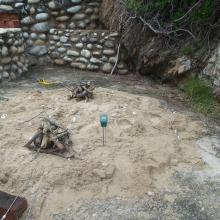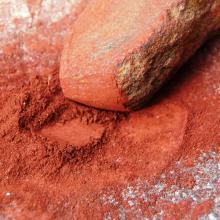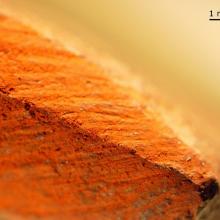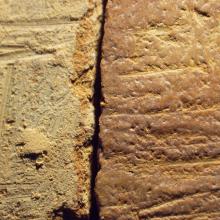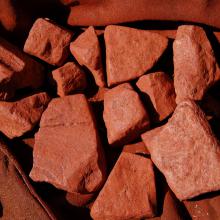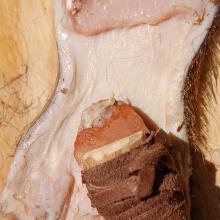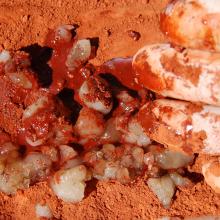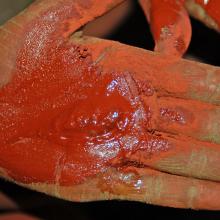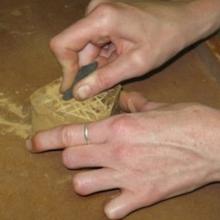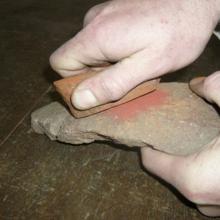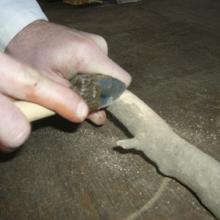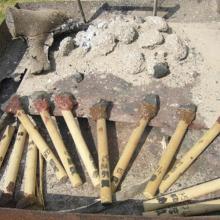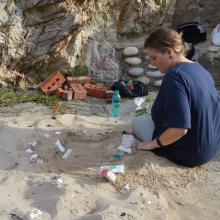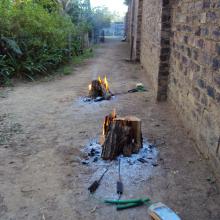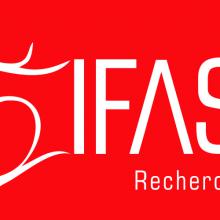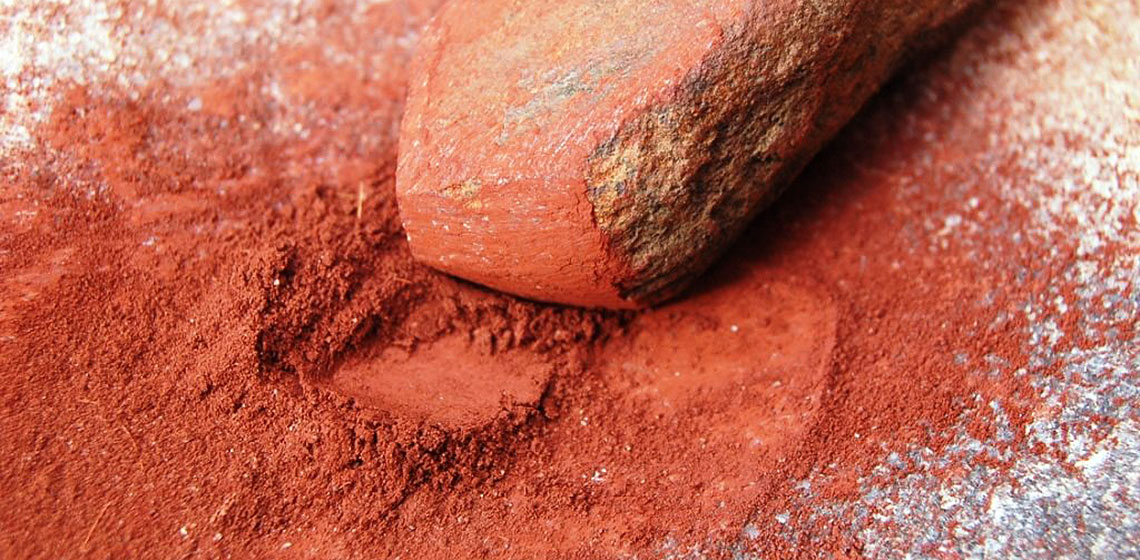
The Archaeology division at the School of Geography, Archaeology and Environmental Studies at the University of the Witwatersrand organised the First African Conference on Experimental Archaeology (ACE), in Johannesburg, South Africa. The conference was held at the Wits Club, University of the Witwatersrand. ACE encouraged the exchange and sharing of new work in scientific experiments and closely related activities focussing on African and Africanist research. The conference consisted of two days of presentations and posters and one day of workshops and demonstrations.
This first African Conference on Experimental Archaeology was organised by a local organising committee at the University of the Witwatersrand and the international organisation of Archaeological Open-Air Museums and Experimental Archaeology (EXARC). The aims of the conference were to showcase experiments and closely related activities in African contexts and to provide a networking opportunity for researchers to take African archaeology to new places within and outside Africa.
Honorary Professor Lyn Wadley, Evolutionary Studies Institute, University of the Witwatersrand gave a key note address to the conference. Professor Wadley has conducted, published and supervised many experiments in order to replicate activities observed in the African Middle Stone Age. Her experimental work includes heat treatment of rocks, ochre and seeds, and hafting of stone tools with compound adhesives made from natural products like ochre and plant gum.
See more HERE.
The second key note speaker was Professor Innocent Pikirayi, University of Pretoria. Pikirayi won the Humanities Researcher of the Year award in 2014. He integrates his research with community and public engagement approaches with the objective of transforming and decolonising archaeological practice in southern Africa. His main research interest is the complex societies in southern Africa after 1000 AD, and particularly Great Zimbabwe, where he has documented water resources.
See more HERE.
See Images below for examples of experiments done in Africa.
International guests included
Associate professor Bill Schindler, Washington College, Chairman of the International Organisation of Archaeological Open-Air Museums (AOAM) and Experimental Archaeology (EXARC) and Vice-Chair of the Reconstructive and Experimental Archaeology Conference in the USA.
Professor Javier Baena Preysler, Universidad Autónoma of Madrid, Secretary of EXARC, Vice-chair of the Spanish Association of Experimental Archaeology and Editor of the Spanish Bulletin of Experimental Archaeology.

See the Provisional Program as PDF
| Monday 19 March | at the Origins Centre, Wits Braamfontein East Campus 12.00-17.00 Registration |
| Tuesday 20 March | at the Wits Club, Wits Braamfontein West Campus 8:00-18:00 Papers and Posters Presentations |
| Wednesday 21 March | various venues See Workshops and Demonstrations page |
| Thursday 22 March | at the Wits Club, Wits Braamfontein West Campus 8:00-18:00 Papers and Posters Presentations |
Proposed Papers
See the Abstracts as PDF
| Evidence for extensive heat treatment of stone for knapping at the Microlithic site of Mehtakheri, Central India dated to ~48 ka Neetu Agarwal Department of Anthropology, Avadh Girls’ P.G. College, Lucknow, India |
| The application of experimental archaeology and high resolution Computed Tomography to identifying the function of bone implements Lucinda Backwell1,2, Justin Bradfield2,3*, Kristian J. Carlson4,2, Tea Jashashvili5,6,2, Lyn Wadley2 & Francesco d’Errico7,2 1 Instituto Superior de Estudios Sociales (ISES-CONICET), Tucumán, Argentina. 2 Evolutionary Studies Institute, University of the Witwatersrand, Johannesburg, South Africa. 3 School of Geography, Archaeology and Environmental Studies, University of the Witwatersrand, Johannesburg, South Africa 4 Department of Cell and Neurobiology, Keck School of Medicine, University of Southern California, Los Angeles, USA. 5 USC Molecular Imaging Centre (MIC), Department of Radiology, Keck School of Medicine, University of Southern California, Los Angeles, USA. 6 Department of Geology and Palaeontology, Georgian National Museum, Tbilisi, Georgia 7 Centre National de la Recherche Scientifique, UMR 5199 - PACEA, Université de Bordeaux, France |
| A review on digital techniques for analysing carnivore-induced modifications and the future for cave taphonomy Stephanie Edwards Baker Centre for Anthropological Research, University of Johannesburg, South Africa |
| Red alert? The colors of heat-affected quartzite from the Eastern Cape, South Africa Silje Evjenth Bentsen1* & Sarah Wurz1,2 1 School of Geography, Archaeology and Environmental Studies, University of the Witwatersrand, Johannesburg, South Africa 2 SFF Centre for Early Sapiens Behaviour (SapienCE), AHKR Institute, University of Bergen, Norway |
| An actualistic replication of a cranial fracture and linear mark observed on a Middle Pleistocene (0.6 Ma) fossil suid from Bodo, Ethiopia: human predation or natural cause? Anaïs Canevet1, David Cochard1, Christopher Knüsel1, Michel Brenet1,2, Marion Corbé1, Anne-Marie Moigne3,4, Thibault Bienvenu5, Marine Fabrer1, Lee Rozada6, Daniel Cusimano7, Jennifer Parkinson8, Socorro Báez-Molgado9, William Henry Gilbert10,11 & Antoine Souron1* 1 PACEA, UMR 5199, Université de Bordeaux, Pessac, France 2 Institut National de Recherches Archéologiques Préventives, Grand-Sud-Ouest, Centre mixte de recherches archéologiques, Campagne, France 3 Muséum national d’Histoire naturelle, UMR 7194, Paris, France 4 Centre Européen de Recherches Préhistoriques de Tautavel, Tautavel, France 5 Anthropologisches Institut, Universität Zürich-Irchel, Zürich, Switzerland 6 Muséum national d’Histoire naturelle, CR2P-UMR 7207, Paris, France 7 Research, Education, & Conservation Department, Safari West Wildlife Preserve, Santa Rosa, USA 8 Department of Anthropology, University of San Diego, San Diego, USA 9 Department of Anthropology, Texas State University, San Marcos, USA 10 AGES, California State University, East Bay, Hayward, USA 11 Human Evolution Research Center, University of California, Berkeley, USA |
| Characterizing Bipolar Reduction at Swartkrans Cave Matthew V. Caruana* & Kathleen Kuman Archaeology Department, University of the Witwatersrand, Johannesburg, South Africa |
| Wild dog (Lycaon pictus) as a bone accumulator? Experimental taphonomic analysis of a large canid on leporid prey Brigette F. Cohen1* & Job M. Kibii2 1 Department of Archaeology, University of Cape Town, South Africa 2 Palaeontology and Palaeoanthropology, National Museums Kenya, Nairobi, Kenya |
| Determining the amount of time taken to construct Group 1 stone walling in southern Gauteng Kathryn Croll & Saireeni Naidu Archaeology Department, University of the Witwatersrand, Johannesburg, South Africa |
| The heating of yellow ochre: new experimental data and improvement of its archaeological detection Laure Dayet1 & Cuan Hanhdiek2 1 UMR TRACES, University of Toulouse Jean Jaurès, Toulouse, France 2 Department of Archaeology, University of Cape Town, South Africa |
| A Report on Lithic Knapping: Experimental Archaeological Screening of Nubian Like Point Ravindra Devra1*, Anilkumar Devara2 1 Department of Humanities & Social Sciences IISER Mohali, Mohali, Punjab, India 2 Department of Archaeology & Ancient History, the M. S. University of Baroda, Vadodara, Gujarat, India |
| Modern analogues determine hunter-gatherer economies within the Cape Floristic Region and test archaeological theory J.C De Vynck Evolutionary Studies Institute, University of the Witwatersrand, Johannesburg, South Africa |
| A Comparative Study of Percussive Tools in GIS: Preliminary Results from an Experimental Sample Katherine Elmes1*, Matthew V. Caruana1,2 & Marlize Lombard1 1 Center for Anthropological Research, University of Johannesburg, South Africa 2 Archaeology Department, University of the Witwatersrand, Braamfontein, South Africa |
| Black & Red Ware Ceramics in Peninsular India: An Experimental Approach Smita Geedh Independent, India |
| Circle imprints of the Eastern Cape Drakensberg: using experimental archaeology as an independent line of evidence Dawn Green University of South Africa, South Africa |
| Doing site-oriented depositional experiments? This is why you should consider taking a micromorphological block sample! Magnus M. Haaland1*, Christopher Miller2,3, Christopher S. Henshilwood1,4 1 Institute for Archaeology, History, Culture and Religion, University of Bergen, Norway 2 Institute for Archaeological Sciences, University of Tübingen, Germany 3 Senckenberg Centre for Human Evolution and Paleoenvironment, University of Tübingen, Germany 4 Evolutionary Studies Institute, University of the Witwatersrand, Johannesburg, South Africa |
| Testing the efficacy of ochre grinding as the prime mode of production for archaeological ochre Cuan Hahndiek South African Heritage Resources Agency, Cape Town, South Africa |
| What’s cooking? The potential of stable carbon and nitrogen isotopic analysis of Iron Age ceramics and organic residues in understanding food preparation methods Grant Hall1* & Ceri Ashley2 1 UP Stable Isotope Laboratory, Mammal Research Institute (MRI), University of Pretoria, South Africa 2 Department of Archaeology & Anthropology, University of Pretoria, South Africa |
| Growing phytoliths: Can phytoliths be used as a proxy for domesticated plants at precolonial farming sites in southern Africa? Tanya Hattingh1, Marion Bamford2 & Alex Schoeman1 1 Department of Geography, Archaeology and Environmental studies, University of the Witwatersrand, Johannesburg, South Africa. 2 Evolutionary Studies Institute (ESI), University of the Witwatersrand, South Africa |
| Use of genetic analyses along with oral evidence to determine the microbial bioprocesses used in the production of ancient beverages in Africa Antony Higginson1* & Karl Rumbold2 1 School of Chemical and Metallurgical Engineering, University of the Witwatersrand, Johannesburg, South Africa 2 School of Molecular and cell biology, University of the Witwatersrand, Johannesburg, South Africa |
| The heat is on: Experiments to determine if intentional heat treatment of ochre can be identified through use-traces and surface features Tammy Hodgskiss1* & Marine Wojcieszak2 1 Origins Centre Museum, University of the Witwatersrand, Johannesburg, South Africa 2 Evolutionary Studies Institute, University of the Witwatersrand, Johannesburg, South Africa |
| The influence of temper on the chemical composition of pottery: An empirical study using XRF L. Jacobson* & W. A. van der Westhuizen Department of Geology, University of the Free State, South Africa |
| Traces of butchering and burning on skeletal limb element: Preliminary results of an experimental study Jackson S. Kimambo & Stephen Merritt Archaeology, University of Dar es Salaam, Tanzania & University of Alabama at Birmingham, USA |
| Musical instruments from the Later Stone Age at Klasies River and Matjes River? Joshua Kumbani1*, Justin Bradfield2 & Sarah Wurz1,3 1 School of Geography, Archaeology and Environmental Studies, University of the Witwatersrand, Johannesburg, South Africa 2 Evolutionary Studies Institute, University of the Witwatersrand, Johannesburg, South Africa 3 SFF Centre for Early Sapiens Behaviour (SapienCE), AHKR Institute, University of Bergen, Norway |
| EUP grinding stones (GSTs) and the surfacing of starchy plants processing Laura Longo ADM School, College of Humanities Nanyang Technological University, Singapore |
| Unpacking service in context: An experimental study of Mananzve pottery (CE 1185-1730) using Kalanga ethnography Robert Tendai Nyamushosho* & Shadreck Chirikure Materials Laboratory, Department of Archaeology, University of Cape Town, South Africa |
| Society, Archaeological landscape and the preservation of Dry Stone Building Tradition in Southwestern Kenya Isaya O. Onjala Jaramogi Oginga Odinga University of Science and Technology, Bondo, Kenya |
| Experimental study of effect of heat treatment on stone knapping Tosabanta Padhan1* & Neetu Agarwal2 1 Indian Institute of Science Education and Research, Mohali, India 2 Department of Anthropology, Avadh Girls’ P.G. College, Lucknow, India |
| Crystal quartz bipolar reduction: Results of a knapping experiment in southern African Stone Age contexts Justin Pargeter1,2 & Paloma de la Pena3 1 Center for Mind, Brain, and Culture, Emory University, USA 2 Centre for Anthropological Research & Department of Anthropology and Development Studies, University of Johannesburg, South Africa 3 Evolutionary Studies Institute & School of Geography, Archaeology and Environmental Studies, University of the Witwatersrand, Johannesburg, South Africa |
| Open-air preservation of miniaturised lithics: Experimental research in the Cederberg Mountains, Southern Africa Justin Pargeter1,2, Natasha Phillips3,4, Alex Mackay3,4, Marika Low3,4 1 Department of Anthropology, Emory University Centre for Anthropological Research, USA 2 Department of Anthropology and Development Studies, University of Johannesburg, South Africa 3 Centre for Archaeological Science, School of Earth and Environmental Sciences, University of Wollongong, Australia 4 Department of Archaeology, University of Cape Town, South Africa |
| Investigating the Influence of Timing of Access and Butcher Experience on Cut Mark Variables with a Stone Tool Butchery Experiment Briana Pobiner1*, Robert Kaplan2, Kris Kovarovic3, Jacklyn Rogers4, Charles Higson3 & William Schindler5 1 Department of Anthropology, Smithsonian Institution, USA 2 Department of Anthropology, Montgomery College, USA 3 Department of Anthropology, Durham University, UK 4 Department of Archaeology, Dickinson College, USA 5 Department of Anthropology, Washington College, USA |
| Walking on bones: an experimental study on the effects of trampling on bone and its implication for occupational intensity Jerome Reynard Archaeology Division, School of Geography, Archaeology and Environmental Studies, University of the Witwatersrand, Johannesburg, South Africa |
| The role of experimental archaeology in interpreting past techniques used for heat treatment Patrick Schmidt Eberhard Karls University of Tübingen, Department of Prehistory and Quaternary Ecology, Tübingen, Germany. Eberhard Karls University of Tübingen, Department of Geosciences, Applied Mineralogy, Tübingen, Germany. |
| The Ancients had skills: fostering public understanding through experimental archaeology Karin Scott* & Mariette Harcombe HeritageworkX , Pretoria, South Africa |
| The use of ethnography and experiments to interpret the taphonomy of carbonised marula remains in rock shelters Chrissie Sievers School of Geography, Archaeology and Environmental Studies, University of the Witwatersrand, Johannesburg, South Africa |
| An experimental approach to test the influence of stone tool type on microscopic morphology of cut-marks with an application to the archaeological record Tesfaye Wondyifraw Tsegaye Department of History and Heritage Management Dilla University, Ethiopia |
| An ethnoarchaeological study of hide working with iron scrapers in East Gojjam, Northwestern Ethiopia A. Val1,2, S. Costamagno3, E. Discamps3, E. Claud4, M. Deschamps3,5, V. Mourre3, M.-C. Soulier3, & C. Thiébaut3 1 Ditsong National Museum of Natural History, Pretoria, South Africa 2 Evolutionary Studies Institute, University of the Witwatersrand, Johannesburg, South Africa 3 CNRS UMR 5608 TRACES, Université de Toulouse Jean Jaurès, France 4 INRAP GSO, Centre de recherches archéologiques LGV SEA, France 5 UNIARQ, Centro de Arqueologia da Universidade de Lisboa, Portugal |
| The ochre that binds: Investigating the effects of intensive water-screening on artefacts with ochre residues and organic binders Elizabeth Velliky1,2 & Nicholas J. Conard3 1 Institut für Naturwissenschaftliche Archäologie, Mathematisch-Naturwissenschaftlichen Fakultät, Tübingen, Germany 2 Archaeology/Centre for Rock-Art Research and Management, M257, Faculty of Arts, School of Social Sciences, The University of Western Australia, Crawley, Australia 3 Department of Early Prehistory and Quaternary Ecology & Senckenberg Center for Human Evolution and Quaternary Ecology, University of Tübingen, Tübingen, Germany |
| Trampling Vs. Retouch in a lithic assemblage: a case study from a Middle Stone Age spring site, Steenbokfontein 9KR (Limpopo, South Africa) David Witelson1 & Palona de la Pena2 1 Rock Art Research Institute, School of Geography, Archaeology and Environmental Studies, University of the Witwatersrand, Johannesburg, South Africa 2 Evolutionary Studies Institute & School of Geography, Archaeology and Environmental Studies, University of the Witwatersrand, Johannesburg, South Africa |
| Optimising Archaeologic Ceramics h-XRF analyses A. Lindahl1,2* & J. Bergman1, 1 Lund University, Sweden 2 University of Pretoria, South Africa |

Proposed Posters
| Using GIS and 3D Photogrammetry to Understand the Formational History of Surface Lithic Assemblages in Koobi Fora, Kenya Seminew Asrat1*, Jonathan Reeves2, Matthew Douglass3 & David R. Braun4 1 Cultural Heritage Research Directorate, Authority for Research and Conservation of Cultural Heritage, Ethiopia 2 Human Paleobiology Doctoral Program, The George Washington University, USA 3 College of Arts and Sciences Anthropology, University of Nebraska-Lincoln, USA 4 Center for the Advanced Study of Human Paleobiology, The George Washington University, USA |
| Practical and interpretive implications of experimental decorated handprints Suramya Bansal Department of Archaeology, University of the Witwatersrand, Johannesburg, South Africa |
| An experimental approach to the functional studies on the non-flint tools in Morocco Youssef Djellal & Abdeljalil Bouzouggar National Institute of Archaeological Sciences and Cultural Heritage, Rabat, Morocco. |
| Measuring Skill Level and the Impact of Raw Material Quality on Oldowan Tools Bisrat Gebreegziabher1*, Fikeru Mekonen2, David R. Braun3 & Joanne Munga4 1 Cultural Heritage Research Directorate, Authority for Research and Conservation of Cultural Heritage, Ethiopia 2 Addis Ababa University, Department of Archaeology and Heritage Management, Ethiopia 3 Center for the Advanced Study of Human Paleobiology, The George Washington University, USA 4Human Paleobiology Doctoral Program, The George Washington University, USA |
| How representative of the total compositional profile of a ceramic is a single sherd? An empirical study using XRF Leon Jacobson* & Willem A. van der Westhuizen Department of Geology, University of the Free State, South Africa |
| Evaluating and comparing raw material mechanical properties: An experimental study of raw materials collected from near Gamohana Hill, Northern Cape, South Africa Simangaliso Makalima, Dr Jayne Wilkins, Dr Ben Schoville, Dr Kyle Brown, Khumo Matlhoko, Jessica Von Der Meden Human Evolution Research Institute, Department of Archaeology, University of Cape Town, South Africa |
| The technological origins: Skill and Raw Material in Early Stone Tool Production Fikeru Mekonnen1*, Bisrat Gebreegziabher2, David R. Braun3 & Joanne Munga4 1 Department of Archaeology and Heritage Management, Addis Ababa University, Ethiopia 2 Cultural Heritage Research Directorate, Authority for Research and Conservation of Cultural Heritage, Ethiopia 3 Center for the Advanced Study of Human Paleobiology, the George Washington University, USA 4 Human Paleobiology Doctoral Program, the George Washington University, USA |
| Taphonomic markings of scavengers based on wild feeding behaviour in Gauteng, South Africa Charné Nel1* and Stephanie Edwards Baker 1 Centre for Anthropological Research, University of Johannesburg, South Africa |
| Experimental Approaches in Identification of Used Flakes through Edge Damage Patterns at Koobi Fora, Kenya Misganaw G. Woldetsadik1*, Ella V. Beaudoin2, David R. Braun3 & Stephen R. Merritt4 1 Authority for Research and Conservation of Cultural Heritages, ARCCH, Addis Ababa, Ethiopia 2 Anthropology Department, NMNH Smithsonian Institution, USA 3 Centre for the Advanced Study of Hominin Paleobiology, George Washington University, USA 4 Department of Anthropology and Anthropology Department, University of Alabama at Birmingham, USA |
| An ethnoarchaeobotanical and experimental approach of macro-plant remains in the Moroccan Later Stone Age Ismail Ziani & Abdeljalil Bouzouggar National Institute of Archaeological Sciences and Cultural Heritage, Rabat, Morocco |
| Differential pre- and post-hardening mass of loom weights: a preliminary experiment Emily C. Watt Centre for the Archaeology of Human Origins, University of Southampton, UK |
| Zimbabwe furnace reconstruction and experimental use for gold refining and glass bead manufacture Robert Thornton1*, Jonathan Thornton2 & Njabulo Chipangura1,3 1 Anthropology, University of Witwatersrand, 2 Art Conservation (objects), Buffalo State College SUNY, USA, 3 Mutare Museum, Zimbabwe |

Workshops and Demonstrations
Wednesday 21 March
| Time | Workshops/demonstrations | |||
| 9 - 13h | The ancients had skills: Ancient throwing weapons (open to all) Read more |
Bone tools (max 15 persons) Read more |
Heat treatment of silcrete (open to all) Read more |
Using R for data management and statistics in experimental archaeology (Open to all) Read more |
| 13 - 14h | LUNCH | |||
| 14 - 17.30h | Oh Ochre? (open to all) Read more |
Knapping: Middle Palaeolithic Technologies Read more |
Carnivore taphonomy in Africa (max 30 persons) Read more |
|
Workshop/demonstration abstracts
The Ancients had Skills: Ancient Throwing Weapons
Karin Scott, Mariette Harcombe and Graham Reeks
HeritageWorkX
African peoples used a variety of weapons for hunting game. The skill involved to accurately use these weapons can only be appreciated through experimentation. This demonstration will involve participants using spears of various lengths and throwing a knopkierie to try and ‘kill’ our ‘Grassy Gazelle” (A gazelle-shaped wooden superstructure covered with rolled grass). In addition, participants can try their hand at using an Atlatl (spear thrower). Although this weapon was not used within the African context, the technique involved is similar to that of throwing a spear by hand. The marks, or taphonomy, left on the ribs of the Grassy Gazelle, the spear’s angle of penetration, coupled with the way in which the grass simulates the repelling action of animal hair, will be demonstrated and discussed.
Do you have the skills of the ancients?

Bone tool workshop
Jerome Reynard
University of the Witwatersrand
Bone was a readily available resource in the past and bone tools were thus a key component of Stone Age technology. Much of the research on bone tool production focusses on bone points. Given the durability of bone, it seems reasonable to assume that bone flakes would also be an important tool component. This workshop will focus on experimentally reconstructing bone flakes using knapping and other bone-modifying techniques. It will seek to address some important issues with regard to bone flaking. For example, given the relative ductility of bone in comparison to stone, would fire have been used to knap bone? Equifinality between marrow extraction and tool-making would make it difficult to discern between these two outcomes but are there specific percussion techniques that could be used to differentiate between subsistence patterns and tool-making?
This will not be a ‘talk shop’; the workshop will involve practical experiments and activities conducted on the venue grounds. We will spend much of our time attempting to reconstruct bone flakes and other tools in an experimental area. Participants are expected to have knowledge of basic knapping techniques and be familiar with actualistic bone tool-making methods. Protective glasses and gloves will be supplied. We will also make available various skeletal elements from different size class animals to be used as bone tool blanks. Due to space limitations, the workshop will be restricted to 10-15 participants.

Heat treatment of silcrete
Patrick Schmidt
Eberhard Karls University of Tübingen
Demonstration of heating silcrete from the Cape region.

Knapping: Middle Palaeolithic technologies
Javier Baena Preysler
University of Madrid
Middle Paleolithic experimental technology or knapping the MP. With this workshop, our aim is to show to a general public the variability of the lithic knapping technologies with particular attention to the European concepts of the Mousterian. From the beginning, participants will appreciate in detail particular solutions present in several knapping methods, and can at the same time actively participate in the knapping process and understand how this process is the result of many technical behaviors acquired by past human communities. By teaching some technical resources, the participants will appreciate the skillful and complete process present in the production of lithic tools.

‘Oh Ochre?’ Workshop
Tammy Hodgskiss
University of the Witwatersrand
Ochre is found at almost all Middle and Later Stone Age sites and is still widely used around the world today. The regular collection and use of bright red ochre varieties, at a time when the first undisputed indicators of behavioural complexity are evident, have made it a significant interpretative tool in archaeological assemblages. However, there are inconsistencies in how to categorise and define ochre pieces, use-traces and ochre powder applications; which can make inter-site comparisons and understandings problematic.
This workshop will deal with issues of the discrepancies in ochre terminology, geological categorisation and use-trace identification. We will present a range of geological ochre varieties, and issues of identification and labelling will be discussed. The pieces will then be processed in multiple of ways by the workshop participants, during which technique and use-trace variations will be noted and debated. Pooling our collective knowledge on the topic (and related themes), we aim to gain a better understanding of the diverse ways to use and interpret this material. This workshop promises to be informative and integrative. Come and get your hands dirty!

Using R for data management and statistics in experimental archaeology
Justin and Catherine Pargeter
University of Johannesburg and Emory University
Archaeology, and its experimental sub-discipline, is fast becoming a data-driven science. This has resulted in a growing chasm between practitioners with and without access to the practical knowledge and tools to process, review, and analyse quantitative data sets. Fortunately, the free and open-source R data analysis platform has emerged as one of the most powerful tools for data processing, visualisation, and modeling. Data analysis skill sets as applied on the R platform are also fast becoming a marketable skill which archaeologist can apply in the private sector. This workshop will cover two topics: 1.) an introduction to the basic structure and language of the R platform and 2.) a step-by-step data processing, visualisation, and analysis case study using a typical experimental archaeology data set.
While the workshop is introductory and open to all, it will benefit those who have a basic understanding of statistics and are comfortable operating a computer.

Carnivore Taphonomy in Africa: Experimental protocols, referential frameworks and knowledge gaps
Brigette F. Cohen
University of Cape Town
Carnivore taphonomy in Africa has previously focussed on large animals, particularly hyenas and felids, feeding on large-bodied prey. The taphonomic modifications of many African carnivore species have yet to be investigated. This gap blinds researchers to potential carnivore signatures in archaeological settings, and obligates researchers to infer African carnivore activity based on the modification patterns of European or American species. Additionally, there is little uniformity in experimental protocols or taphonomic criteria. Making comparisons between experiments or researchers inaccurate. This workshop aims to provide faunal analysts with the opportunity to discuss these issues and investigate ways to ameliorate these problems.

